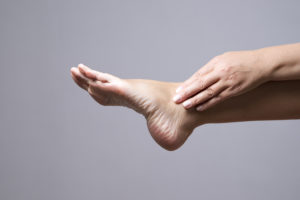Diabetes is the major reason why patients need amputation of toes, feet or legs. Diabetics often get wound or cuts on their feet and don’t realize they are there because of neuropathy, when they can’t feet their feet. This combined with the bottom of a foot being in a moist environment can be detrimental to diabetics. However, with correct management, you can avoid foot wound complications before they appear and become unmanageable.
The most important aspect to prevent foot ulcers is to eat a healthy diet, get regular exercise, monitor your blood sugar and take all of your prescribed medications.
Inspect your feet daily by looking for cracks, blisters, cuts, sores, tenderness, redness or swelling. If you can’t reach your feet to inspect them you can use a hand mirror or place it on the floor and hold your foot over it.
Wash your feet daily in lukewarm water, and then dry them gently. Use talcum powder or cornstarch between the toes to help keep them dry. Use of a moisturizing lotion on the tops and bottoms of feet will keep the skin soft and prevent diabetic foot wounds.
If you see a callus, blister or foot lesion, don’t remove it yourself with nail clippers, scissors or a nail file. You may cause more harm than do good. See your doctor instead.
Trim toenails straight across and then file them with an emery board. Ask for assistance if you are unable to do this yourself or see your doctor.
Always wear shoes, even while in the house to prevent foot injuries that can lead to diabetic foot wound complications.
Wear shoes that fit properly and have good support in the heel, arch and ball area of your feet. Avoid wearing any shoes that are tight, have high heels or squeeze your toes. Your physician may recommend orthopedic shoes that fit your feet perfectly to help distribute your weight evenly and cushion your feet.
Quit smoking if you are a smoker. Smoking interferes with foot circulation and reduces the amount of oxygen in your blood to result in poor healing and more complications of simple diabetic foot wounds.
Have regular foot checkups with your doctor for an exam at least once a year, and more often if your doctor recommends it.
Make sure and visit your doctor if you have a sore foot for any reason and it doesn’t begin to heal. Contact us at (214) 366-4600 for a comprehensive program in the prevention of diabetic foot wound complications. We can inspect your feet, make a diagnosis and prescribe the appropriate treatment to get you back on your feet comfortably.





















